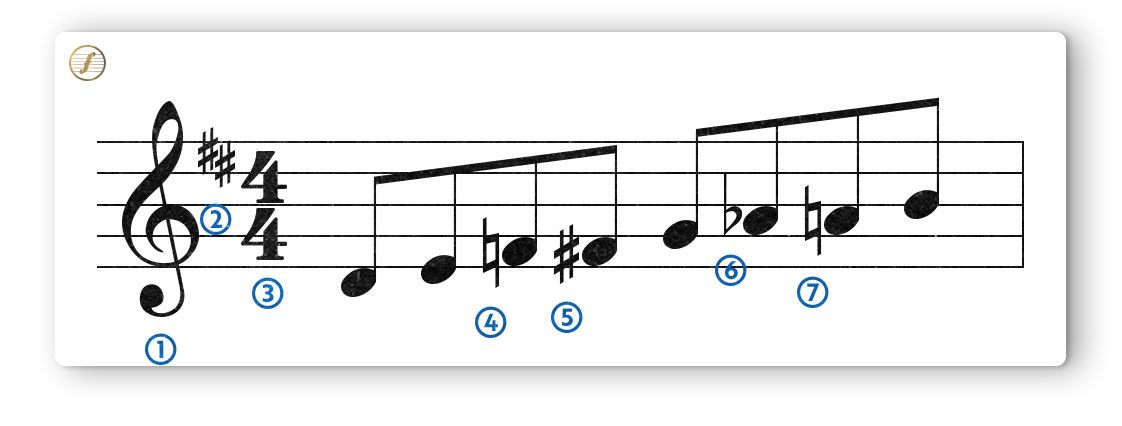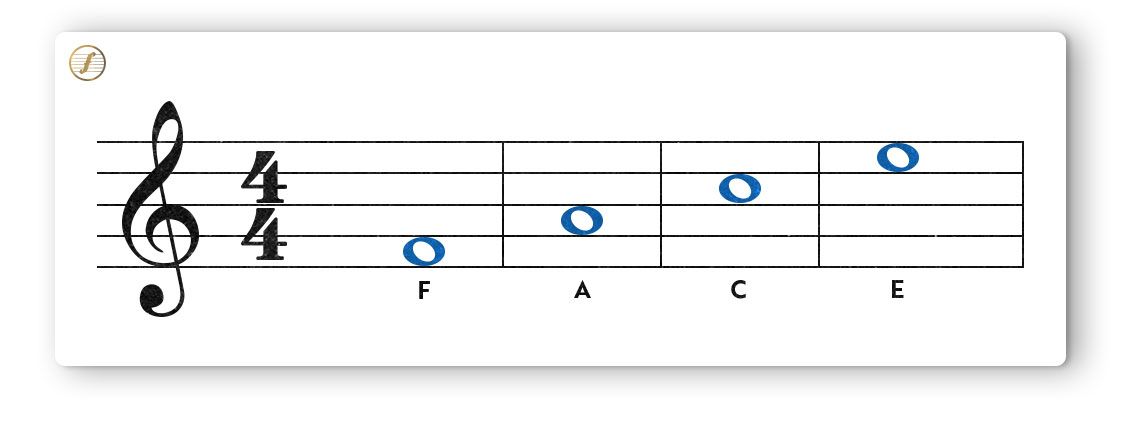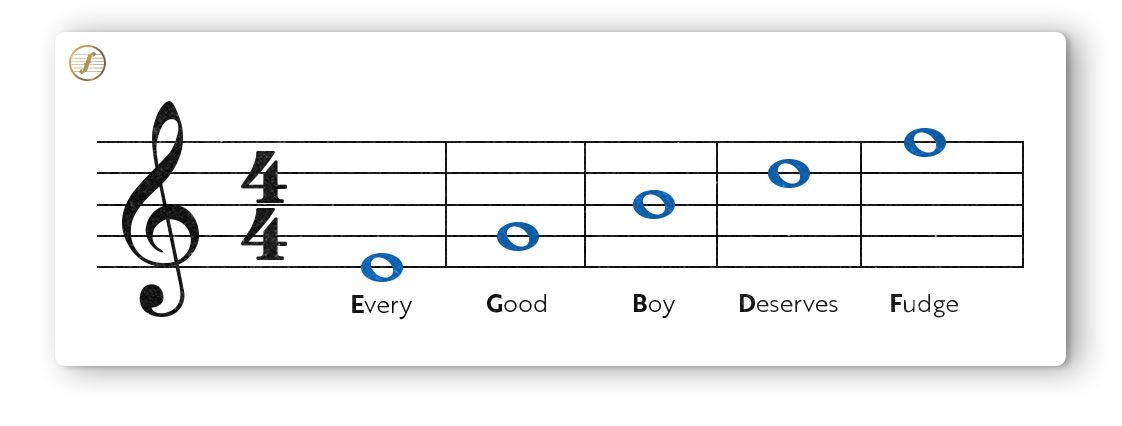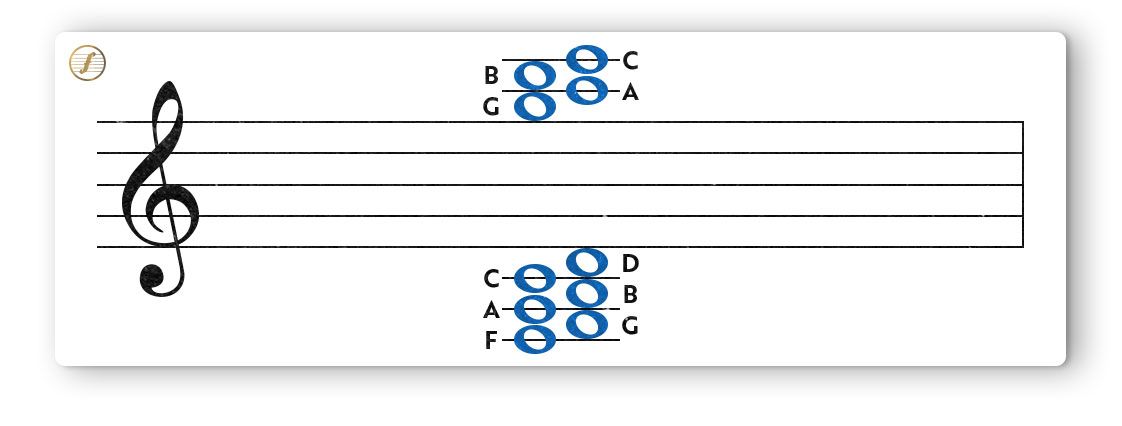Do you frequently come across sheet music when looking for new music to play on your guitar? If it seems complex and confusing to you at first, don’t worry. Learning to read it isn’t hard as long as you take it step-by-step. Here’s how to read sheet music for guitar!
The difference between guitar tabs and sheet music
You’re probably familiar with guitar tabs, so sheet music might seem somewhat similar to you. However, there are a few differences between the two:
Guitar tabs:
1) They have six lines, and each of them represents a string on your guitar.
2) They also have numbers on some of the lines that indicate which note to play, and where.
3) They don’t provide the duration of the notes, or if they should be sustained while a new note is being played.
4) The dynamics (volume) aren’t expressed.
Sheet music:
1) There are five lines, and each one representing a particular note, the spaces between the lines also representing a note.
2) Instead of having numbers, sheet music uses circles, most of them being accompanied by a stem that express how long a note should be played
3) Where the note is written indicates which note (pitch) it is
3) The dynamics and many other characteristics of the song are indicated in sheet music

So, why should you learn how to read sheet music on guitar?
Sheet music is used both in classical music and in jazz. If you want to know as much as you can about the song you’re playing, getting to grips with sheet music is essential. Sheet music is a lot more accurate than guitar tabs and everything you need to play a song to its best will be indicated on it. Such additional information includes:
- The piece’s dynamics (volume)
- Tempo (speed)
- The time value of each note
- How long each note and chord should be sustained
- And occasionally, how and when to count so as to coordinate better with the rest of the band.
How to read sheet music notes on a guitar
Guitar sheet music is written on the treble clef, which is the upper half of the grand staff. That’s because the guitar has a higher pitch when compared with other instruments. However, the music is transposed. That means that all notes written on guitar sheet music are actually an octave lower than when played on the guitar. But don’t let that confuse you for now.
The musical staff is made up of different symbols including five lines which have four spaces in between them. This is where the notes are going to sit. The treble clef, the key signature, and the time signature are all also included on the staff, as well as the notes themselves.
Let’s breakdown the different symbols that can be found on the musical staff:

- The treble clef: This defines which notes are being played on this piece of sheet music.
- The key signature: This depicts the key of the piece by highlighting if there are any sharps or flats.
- The time signature: How many beats each bar has.
- (and 5, 6, and 7) Accidentals: Sharps, flats, or natural symbols.
Notes: Each note has a name, and they can be modified by accidentals.
Lines and spaces: Where the notes sit.
If this seems a little overwhelming, don't worry. Here are 8 tips to make reading sheet music even easier.
Tip No. 1: Use these rhymes to learn the name of the notes

This is an important step as learning the guitar sheet music note names by heart is essential. There’s a simple way to do this. Counting from the bottom to the top, the names of the notes written in the spaces spell: FACE.

The names of the notes written on the lines are represented by the first letter of each word used in this sentence: Every Good Boy Deserves Fudge.
Tip No. 2: Get to know your accidentals
You may have noticed that there are three symbols that can be placed before a note. These are called “accidentals”. There are sharps ♯, flats ♭ and natural ♮ symbols:
- A sharp ♯ makes the note that comes just after it a semitone higher.
- A flat ♭ makes the note that comes just after it a semitone lower.
- A natural symbol ♮ cancels out any sharp or flat that may have appeared before.
Tip No. 3: Learn how to play scales without sharps or flats
Even though adding accidentals might be tempting, it's better to start small. For example, get used to playing the scales of C Major and A minor because they don't have any accidentals. Playing them using all six strings in the first three frets is a great way to get used to scales without any accidentals.
Tip No. 4: Know your time values

Every note has a different time value. Here are the most common notes and their values:
- A whole note (minim) is equal to 4 quarter notes (crotchets)
- A dotted half note (dotted semibreve) is equal to 3 quarter notes (crotchets)
- A half note (semibreve) is equal to 2 quarter notes (crotchets)
- A quarter note (crotchet) is equal to 1 quarter note (crotchet)
- An eighth note (quaver) is equal to ½ a quarter note (½ a crochet)
- A sixteenth note (semiquaver) is equal to ¼ a quarter note (¼ a crotchet)
Tip No. 5: Count the beats while playing
Knowing how to read sheet music for guitar has a lot of advantages. One of them is being able to actually know what part of the bar you're in, even when the rhythm you're playing is difficult. But to do that, you’ll first have to understand how time signatures work.
Time signatures have two numbers: One at the top and one at the bottom. They're always written after the clef and the accidentals that make up the key signature.
The number on top means how many beats there are in each bar and the one below shows how long the beat is. For example, if you have 4/4, that means there are going to be four beats made up of four quarter notes. If you have 2/2, that means you'll have two beats of half notes.
This doesn't mean that the rhythm will have to be the same as the beats, but counting them will help you understand what you're reading and play a lot better.
Tip. No. 6: Learn to read the notes on ledger lines

Guitars have a wide range of notes, so the staff isn’t enough to cover all of them. That’s where ledger lines come in. These are little lines that are added below or above the staff, creating more space for new notes. It’s important to memorize these too. Check out the above graphic to learn them.
Tip. No. 7: Listen to guitar music while reading sheet music
Remember when you were learning how to read words? It was a lot easier learning what was written when someone else read it out loud. That works for music too! Try to find familiar tunes first and then move on to more difficult and unknown music. You may surprise yourself by how much faster you learn.
Tip No. 8: Don't try to learn everything at once
Learning something new can be very exciting. However, don’t try to learn how to read sheet music for guitar all in one go, even if it’s tempting. If you follow the tips above, you should be reading sheet music in no time!
8 top tips for reading sheet music for guitar
- 1. Learn how to read the notes on the staff and familiarize yourself with sheet music symbols.
- 2. Practice adding sharps and flats going up and down while playing on one string and saying the name of the note.
- 3. Learn to read some scales without accidentals before reading scales with accidentals
- 4. Learn the different note values, they will give you the rhythm of the song.
- 5. Count the beats while playing, even if they don’t match the rhythm.
- 6. Learn to read ledger lines.
- 7. Listen and read guitar music at the same time.
- 8. Be patient! Don’t try to do everything at once.
And the most important thing of all: Have fun when learning how to read sheet music for guitar! It’s vital that mastering your instrument is fun, otherwise you won’t stick with it.
If you’re looking for a way to improve that’s intuitive and engaging, you can try Fretello for free. You’ll progress with a step-by-step Learn Path and advance quickly thanks to the real-time feedback.